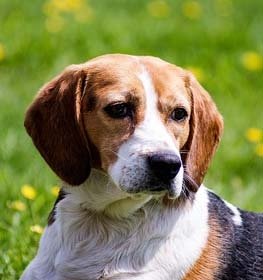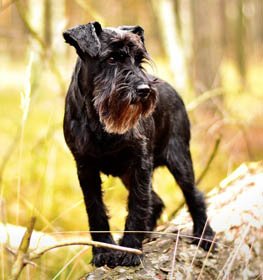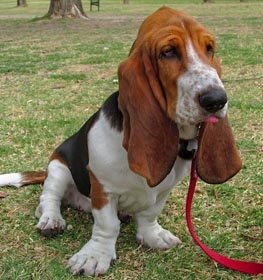Australian Terrier Information & Dog Breed Facts
Collection of all the general dog breed info about Australian Terrier so you can get to know the breed more.
| Group | Hunting Dogs |
|---|---|
| Popularity Rank | 137 |
| Reviews | 1 |
| User Ratings | |
|
Compare the Australian Terrier With Other Dogs
Select at least one dog breed to make the comparsion. | |
 | |
| Origin | |
|
Common Names & Aliases
What other names is an Australian Terrier known by? Discover all traditional, regional and informal names used for this breed. | Aussie |
|---|---|
|
Breed Classification
What type of dog breed is an Australian Terrier? Learn about its genetic classification and breeding category. | Purebred |
|
Size Classification
What size category is an Australian Terrier? Learn how big the Australian Terrier breed typically grows. | Small |
|---|---|
|
Weight Statistics
How much does an Australian Terrier weigh? Discover typical weight ranges for adult males and females of the Australian Terrier breed. | 9-14 pounds (4-6 kg) |
|
Average Weight
What is the average weight of an Australian Terrier? | 11.5 pounds (5 kg) |
|
Height
How tall is the Australian Terrier? Australian Terrier height: | 9-11 inches (23-28 cm) |
|
Average Height
What is the average height of an Australian Terrier? | 10 inches (25.5 cm) |
|
Price Range
How much does an Australian Terrier puppy cost? Find current market prices and factors affecting Australian Terrier costs. | $1000-$1500 If you choose to purchase the Australian Terrier, you should know that the mentioned amount of money is an average of the collected data from breeders’ sites and puppy finder places. If you have a Australian Terrier for sale, please advertise it on a reliable website to make sure the Australian Terrier gets to a happy place. |
|---|---|
|
Availability
How easy is it to get a Australian Terrier? How many Australian Terrier are there in the world? | Frequent: The Australian Terrier is easier than average to get. Maybe there is some risk of overbreeding, as it is a popular breed. Due to its popularity, inbreeding may occur. A new study shows that inbreeding contributes to the incidence of disease and health problems. So be careful and seek the help of an experienced person or a professional, in making your decision. |
|
Intelligence Rating
How intelligent is an Australian Terrier? Discover the Australian Terrier's intelligence ranking and learning capabilities. | Smart: The Australian Terrier dogs have great intelligence. They understand and memorize new commands in 15-25 repetitions.
The Australian Terrier is among the smartest dogs in the intelligence ranking. |
|---|---|
|
Training Difficulty
How easy is it to train an Australian Terrier? Learn about the Australian Terrier's trainability and response to training methods. | Australian Terrier dogs are easy to train. They find out the association between commands and actions quite quickly. |
|
Watchdog Rating
How good is an Australian Terrier as a watchdog? Learn about the Australian Terrier's alertness and guarding instincts. | Australian Terrier dogs are average watchdogs. If they sense something different, they will alert you, but observation isn't considered their main job.
|
|
Territorial Protection
Is an Australian Terrier protective of its territory? Learn about the Australian Terrier's guarding instincts and behavior. | Australian Terrier dogs are extremely protective guard dogs. This breed doesn't hesitate to protect its territory so the Australian Terrier can be a good choice if you want an excellent guard dog. Keep calm and the Australian Terrier will take care of unwanted people or animals. |
|
Personality Traits
What personality does an Australian Terrier have? Learn about characteristic Australian Terrier temperament and behavior traits. | AlertCourageousIntelligentLoyalOutrightTemperedCompanionableSpirited |
|---|---|
|
Sensitivity Level
How sensitive are they? Australian Terrier sensitivity: | Australian Terrier dogs are less sensitive than other dog breeds. They aren't receptive to their owner's emotions and handle soft punishment quite well.
They don't mind an always changing daily routine, a hectic household, young children, a noisy or office environment, and frequent guest visits. |
|
Affection Level
How affectionate are they? Is an Australian Terrier a good family dog? | Average: Australian Terrier dogs are average dogs regarding their affection level. Some breeds are forthcoming and friendly, while others are independent and don't bond too closely with their owners. |
|
Social Needs
How much social interaction does the Aussie need? Australian Terrier social needs: | Australian Terrier dogs are a social breed. They enjoy being around people or other animals. This breed doesn't tolerate being left alone. |
|
Impulse to Wander or Roam
How likely is the Australian Terrier to run away? Does this breed explore or wander a lot? Does Australian Terrier roam? | The wanderlust potential of the Australian Terrier is strong enough to escape from home. They have a strong desire for exploring the world. Safer to walk them on a leash unless you teach them how to get back to you on command. |
|
Prey Drive
Do this canine have a strong prey drive? Does Australian Terrier have high prey drive? | Australian Terrier dogs have a high impulse to chase and catch something. Cats or any other small animals are in danger. It's a natural instinct, doesn't necessarily mean that Australian Terrier dogs are aggressive. Better to keep this breed on a leash. |
|
Barking Frequency
Does an Australian Terrier bark a lot? Learn about typical Australian Terrier vocalization patterns and triggers. | Average: The Australian Terrier barks occasionally. They can change their barks depending on their emotional level and what they're trying to say. Different barks could mean the same and the same barks could have different meanings.
Top reasons for barking: protection, alarm, fear, boredom, attention-seeking, greeting, separation anxiety, compulsive barking. |
|---|---|
|
Playful Nature
How playful is an Australian Terrier? Understand the typical play drive and energy level of the Australian Terrier breed. | The Australian Terrier is a playful breed. Excited barking and sometimes nipping will alert you to play. |
|
Apartment Adaptability
Can an Australian Terrier live in an apartment? Learn about the Australian Terrier's suitability for apartment living. | It is not the best choice if you want to keep them indoors, however, with careful exercise and several walks a day, they will tolerate the indoor environment, so it is possible to keep Australian Terrier indoors. |
|
Lifestyle Adaptability
How adaptable is an Australian Terrier to lifestyle changes? Learn about the Australian Terrier's flexibility to new situations. | Australian Terrier dogs adapt very well to lifestyle changes and basically all living environments. They don't mind moving from one place to another with their owner. |
|---|---|
|
Alone Time Tolerance
Can an Australian Terrier be left alone? Learn about the Australian Terrier's tolerance to solitude. | Australian Terrier dogs do best when a family member is at home during the day or if their workplace is dog-friendly so they can take the dog at work. |
|
Bite Risk Assessment
What is an Australian Terrier biting potential? Learn about the Australian Terrier's bite risk factors. | Low 🔽 The Australian Terrier has a low chance of biting somebody. Top reasons for dog bite: protection, pain, excitement, herding instinct, being provoked. (Data based on the available online bite statistics.) |
|---|---|
|
Mouthing Tendency
Is an Australian Terrier mouthy? Learn about the Australian Terrier's tendency to use mouth during play. | Australian Terrier dogs have a low tendency to nip, chew, play-bite, or herd people. It's a common habit during puppyhood, not aggressive behavior. These "bites" don't hurt, but Australian Terrier dogs need to be taught a good attitude. |
|
Bite Strength Rating
How strong is an Australian Terrier bite? Learn about the Australian Terrier's bite force measured in PSI. | Between 100 and 200 PSI 🔽 Australian Terrier bite force: Weak. The Australian Terrier bite force is considered weak when compared to other dog breeds. The bite force Australian Terrier measurements usually fall below 200 PSI, making them one of the breeds with the weakest bite force. The bite force of an Australian Terrier may be weak, but it's important to remember that any dog's bite can still be dangerous if not managed properly. Despite the bite force of Australian Terrier being lower, it does not make them any less lovable or enjoyable as pets.
Australian Terrier bite wounds might not be as severe, but it is still essential to be cautious and prevent any biting incidents. They are usually not aggressive and very friendly towards children and other animals. To ensure a well-behaved dog, it's essential to learn how to train an Australian Terrier puppy not to bite from an early age. With proper training and socialization, an Australian Terrier can be a wonderful addition to any family, providing love and companionship for years to come. |
|
Average Lifespan
How long does an Australian Terrier live? Learn about the typical lifespan of the Australian Terrier breed. | 11-15 years The average lifespan of Australian Terrier: 13 years |
|---|---|
|
Climate Tolerance
How well does an Australian Terrier handle different weather? Learn about the Australian Terrier's climate adaptability. | Tolerates warm and cold weather Dogs that tolerate hot and cold weather are typically those that have a double coat of fur. Dogs with a double coat of fur have a layer of fur that insulates their skin and helps protect them from the cold and the heat. |
|
Health Concerns
What health issues are common in an Australian Terrier? Discover typical conditions affecting the Australian Terrier breed. | Australian Terriers are commonly healthy dogs. Vet costs aren't expensive with this breed. |
|
Vet Care Frequency
How often does an Australian Terrier need vet visits? Learn about the Australian Terrier's veterinary care requirements. | Rare The Australian Terrier should have a complete physical check-up at least every 12-18 months (but preferably once per year). If your dog shows any symptoms, call your veterinarian. |
|
Energy Rating
How energetic is an Australian Terrier? Understand daily activity needs of the Australian Terrier breed. | Australian Terrier dogs are high-energy dogs. An active lifestyle makes them happy. |
|---|---|
|
Activity Requirement / Exercise Need
How much exercise does an Australian Terrier need? How much exercise do Australian Terrier dogs require per day?
Do Australian Terrier dogs need a lot of exercises? | Australian Terrier dogs need quite a lot of exercise. Daily walks should be on schedule. If you live an active life, this breed can be a good choice for you. |
|
Sleeping Need
How much sleep does the Australian Terrier breed need? | Australian Terrier dogs don't need too much sleep. They are energetic and desire to live active life. If you think naps are overrated, this breed can be the best choice for you. |
|
Obesity Tendency
Is an Australian Terrier prone to weight gain? Learn about the Australian Terrier's obesity risks. | Average: The Australian Terrier has an average risk for obesity. Daily walks should be on schedule. To make your dog happy and fit, feed him with quality dry dog food and live an active life together. Try to find the happy medium between exercise and feeding.
If you notice any weight gain, consult your veterinarian and make a diet plan. Reduce unhealthy food and snacks, and measure the Australian Terrier weight regularly. |
|---|---|
|
Food Consumption
How much food does an Australian Terrier need daily? Learn about the Australian Terrier's feeding requirements. | 1/2 to 1 cup dry food a day. |
|
Allergy Friendliness
Is an Australian Terrier hypoallergenic? Learn about the Australian Terrier's suitability for allergy sufferers. | Yes Australian Terrier dogs do well with allergy sufferers by causing fewer allergic reaction. However there are no 100% hypoallergenic dogs in the world, there are a variety of breeds that are considered to reduce or minimize the possibility of an allergic response. Coat type isn't necessarily relevant, because most people are allergic to dander (flakes on the dog's skin) or saliva, not actually to dog hair. |
|---|---|
|
Coat Colors
What colors does an Australian Terrier come in? Discover all possible Australian Terrier color variations. | Tan Red Blue Sandy |
|
Grooming Requirements
How much grooming does an Australian Terrier need? Learn about Australian Terrier coat maintenance requirements. | Average: The Australian Terrier requires average grooming effort. Cutting the dog's hair by a professional groomer isn't essential. Brushing the dog's coat is useful to reduce shedding. Ears and eyes should be cleaned regularly to avoid infections. Don't skip the seasonal flea treatment too. Dog nail trimming and dog bath can be helpful sometimes. Check the local pet store for dog grooming supplies and find the best dog shampoo to keep its coat healthy and give your dog a pleasant experience of a dog bath. If you don't have the time, skill, or money to take care of your Australian Terrier, search for a dog groomer or clipping service in your area and book an appointment. Maybe you're lucky to have a dog boarding service that includes grooming or walk-in dog bath places nearby. |
|
Drooling Tendency
Does an Australian Terrier drool a lot? Learn about the Australian Terrier's drooling habits. | The Australian Terrier is a perfect example of a very low drooling tendency. If you're disgusted by slobber spots on your clothes, the Australian Terrier could be a perfect choice for you. Drooling is the unintentional saliva flowing outside of the mouth. It can be completely normal or a sign of a health problem. Certain dog breeds drool minimum compared to others, just like the Australian Terrier.
If you notice any change in your dog's drooling habit, you should contact a vet as soon as possible. |
|
Stinkiness Rating
Does an Australian Terrier smell bad? Learn about the Australian Terrier's natural odor levels. | Medium ⏺ The Australian Terrier has an average chance of bad smell. Top reasons for dog stinkiness: infection of bad tooth/ear/skin folds, gas attacks. |
|
Coat Characteristics
What type of coat does an Australian Terrier have? Learn about the Australian Terrier's fur characteristics. | Rough |
|
Bathing Needs
How often does an Australian Terrier need baths? Learn about the Australian Terrier's bathing requirements. | 4-6 weeks Average. Experts recommended at least every 4-6 weeks for this family pup. According to a study, 56% of pet parents don’t bathe their dogs as frequently as they should, and 60% use the sniff test when deciding when it’s bath time.
Bathing your dog is beneficial to them in more ways than just one. It’s also a good time to look for unusual scratches, bumps, fleas, and other irregularities. When their hair is wet and flat against their body, these details are more visible. |
|
Shedding Level
How much do Australian Terrier dogs shed? How to control, reduce and prevent the shedding of the Aussie? Do Australian Terrier dogs shed a lot? | Australian Terrier dogs shed none to minimal. Having a puppy from this breed you don't have to be afraid of your couch or car being covered by dog hair. Australian Terrier dogs could be the best choice if you don't tolerate dog hair. |
|
Child Compatibility
Is an Australian Terrier good with children? Learn about the Australian Terrier's behavior around kids of different ages. | Australian Terrier dogs are kid-friendly dogs. This breed is a good choice if you have children. |
|---|---|
|
Pet Compatibility
How well does an Australian Terrier get along with other pets? Discover the Australian Terrier's compatibility with other animals. | Australian Terrier dogs do best when they’re the only pet at the family. |
|
Stranger Friendly
Are they aggressive or friendly towards/with strangers? Australian Terrier temperament with other people: | Australian Terrier dogs are average friendly towards strangers. |
|
Cat Friendly
How well do Australian Terrier dogs get along with cats? Are they good with kittens? What is this fido's temperament with cats? Can they be good with cats? Can the Australian Terrier breed live with a cat? | Australian Terrier dogs are not cat-friendly dogs. |
|
Dog Friendly
Is Australian Terrier good with other dogs? Are they dog-friendly dogs? How well do Australian Terrier dogs get along with other dogs? | Australian Terrier dogs are not dog-friendly. If you want more dogs in your family or you'd like to join dog meetups, the Australian Terrier is not the best choice. |
|
Good For First Time Owners
Is Australian Terrier breed good for first-time owners? Do they make a good dog for novice owners? Is Australian Terrier breed suitable for first-time owners? | Yes Australian Terrier dogs are good for novice owners, due to their easy-going personality. |
|
Office Friendly
Are Australian Terrier dogs good office canines? Do Australian Terrier dogs make good office-friendly pets? Can they be office dogs? | No Australian Terrier is not the best dog breed for office environment. |
|
Senior Citizens Friendly
Are they senior citizens friendly dogs? How well do Australian Terrier dogs get along with the elderly people? What is the Aussie temperament with senior people? Are Australian Terrier dogs good for elderly owners? | Australian Terriers are usually recommended for elderly people. |
|
Service Dog Capability
Can an Australian Terrier be a service dog? Learn about the Australian Terrier's service work potential. | Not really This breed generally not used as a service dog. A service dog is a term used in the USA to refer to any type of assistance dog specifically trained to help people who have disabilities, such as visual impairment, hearing impairments, mental disorders, seizures, mobility impairment, and diabetes. Service dogs are protected under the ADA (Americans with Disabilities Act).
Australian Terrier is not the best breed for service purposes. |
|---|---|
|
Therapy Work Suitability
Is an Australian Terrier good as a therapy dog? Learn about the Australian Terrier's therapy work aptitude. | Not really This breed is generally not used as a therapy dog. A therapy dog is a dog that might be trained to provide affection, comfort, and love to people in hospitals, retirement homes, nursing homes, schools, hospices, disaster areas, and people with anxiety disorders or autism.
Australian Terrier is not the best breed for therapeutic purposes. |
|
Scent Detection Ability
Is an Australian Terrier good at detection work? Learn about the Australian Terrier's scenting abilities. | Not really They are not typically employed for this type of work, but there may be exceptional cases. A detection dog or sniffer dog is a dog that is trained to use its senses (mostly its smell) to detect substances such as explosives, illegal drugs, wildlife scat, currency, blood, and contraband electronics such as illicit mobile phones.
Australian Terrier is not the best breed for detection purposes. |
|
Search & Rescue Potential
Can an Australian Terrier do search and rescue? Learn about the Australian Terrier's SAR capabilities. | Not really This dog breed is not typically used as a search and rescue dog. The use of dogs in search and rescue (SAR) is a valuable component in wilderness tracking, natural disasters, mass casualty events, and locating missing people.
The Australian Terrier is not the best breed for SAR purposes. |
|
Maritime Work Ability
Is an Australian Terrier good on boats? Learn about the Australian Terrier's maritime capabilities. | Not really Australian Terrier breed usually doesn't like being on a boat. Boat dogs were typically bred for their strength, stamina, and water resistance, as they were often required to perform tasks such as pulling in fishing nets, and jumping into the water to retrieve ropes or lines, or helping to move cargo. Sailor dog is a type of dog that was bred to accompany sailors on their voyages. They were typically used for three purposes: as a working dog, a watchdog, and as a companion. A boat dog is a term used to describe a type of dog that was traditionally bred and used as a working dog on boats. |
|
Draft Work Capability
Can an Australian Terrier pull carts? Learn about the Australian Terrier's drafting abilities. | Not really A drafting dog or draft dog is a dog bred and used for cart pulling. Dogs bred for this work have strong builds and qualities that are needed, strength and determination.
Australian Terrier is not the best breed for drafting purposes. |
|
Military Service Background
Was an Australian Terrier used in military service? Learn about the Australian Terrier's military history. | Not really In history, this breed was not really used for combat dog. |
|
Puppy Litter Size
How many puppies does an Australian Terrier usually have? Learn about typical litter sizes. | 3-6 puppies |
|---|---|
|
Pregnancy Duration
How long is an Australian Terrier pregnant? Learn about the Australian Terrier's gestation period. | 60-64 days Reproductive cycle of the female Australian Terrier: The first period called Proestrus lasts for about 9 days.
During this time the females start to attract males. You can notice by swelling vulva and bloody discharge. The second part is the Estrus when the female is receptive for the male. It lasts for about 3 to 11 days. The sign of the proestrus part is the soft and enlarged vulva. The discharge decreases and lightens in color. The third part is the Diestrus. Normally, it occurs around day 14. In this period the female’s discharge changes for vivid red and coming to its end. The vulva returns to average, and she will no longer permit mating. The fourth part called the Anestrus. The time frame between heat periods normally lasts about six months. |
|
Breeding Frequency
How often can an Australian Terrier have puppies? Learn about safe breeding intervals. | Once a year. More frequent breeding is not healthy. It is very important not to buy a dog from a puppy mill, where the needs of the pups and their mothers are ignored. It's an inhumane high-volume dog breeding facility, where puppies born several times a year. |
|
AKC Classification
What AKC group is an Australian Terrier in? Learn about the Australian Terrier's AKC classification. | Recognized by the American Kennel Club in 1960 as a Terrier breed. |
|---|---|
|
FCI Classification
What FCI group is an Australian Terrier in? Learn about the Australian Terrier's international classification. | Recognized by FCI in the Terriers group, in the Small sized Terriers section. |
Australian Terrier Pros and Cons
- Intelligence Rating: Smart: The Australian Terrier dogs have great intelligence.
- Training Difficulty: Australian Terrier dogs are easy to train.
- Health Concerns: Australian Terriers are commonly healthy dogs.
- Allergy Friendliness: Australian Terrier dogs do well with allergy sufferers by causing fewer allergic reaction.
- Shedding Level: Australian Terrier dogs shed none to minimal.
- Drooling Tendency: The Australian Terrier is a perfect example of a very low drooling tendency.
- Mouthing Tendency: Australian Terrier dogs have a low tendency to nip, chew, play-bite, or herd people.
- Lifestyle Adaptability: Australian Terrier dogs adapt very well to lifestyle changes and basically all living environments.
- Child Compatibility: Australian Terrier dogs are kid-friendly dogs.
- Senior Citizens Friendly: Australian Terriers are usually recommended for elderly people.
- Good For First Time Owners: Australian Terrier dogs are good for novice owners, due to their easy-going personality.
- Impulse to Wander or Roam: The wanderlust potential of the Australian Terrier is strong enough to escape from home.
- Alone Time Tolerance: Australian Terrier dogs do best when a family member is at home during the day or if their workplace is dog-friendly so they can take the dog at work.
- Cat Friendly: Australian Terrier dogs are not cat-friendly dogs.
- Dog Friendly: Australian Terrier dogs are not dog-friendly.
- Office Friendly: Australian Terrier is not the best dog breed for office environment.
Australian Terrier History
The Australian Terrier, also known as Aussie, is one of the oldest Australian breeds. Much of the development of the breed was not recorded and has been lost to history. However, it is believed to be descended from a dog known as the Rough-Coated Terrier in the early 19th century, a relative of the old Scotch dog of Great Britain. According to experts, this Terrier was crossed with other British Terriers as well, who were brought to Australia, including the precursor of the Dandie Dinmont Terrier, the Skye, the Yorkshire, and the Black and Tan Terrier. The result was the tough and courageous Aussie.
Although first discovered by Dutch explorers in 1606, the first European settlements on the Australian mainland were not made until the 1780s. The continent was widely considered to be too harsh, distant, and not economically valuable enough to be worth European settlement. That changed when several prominent British thinkers decided to use Australia and the nearby island of Tasmania as prison colonies. Convicts would be sent from Britain to improve the Australian landscape. Eventually, British settlers brought their beloved dogs with them to their new home. It is unclear when exactly the first terrier arrived on Australian soil, but it was likely around the early 1800s. As the settlers faced harsh conditions, they were in need of a hardy, fearless dog that could work in all kinds of weather. The Australian Terriers were bred to control and exterminate rats and snakes on the waterfront, in gold mines, and on sheep stations in the outback. They were also used as watchdogs, shepherds, and companions to the people living in these remote areas.
Moreover, the Australian Terrier is the first native breed to be recognized and shown in Australia. The breed was first shown as the Australian rough-coated Terrier in 1868 in Melbourne, and he was officially renamed Australian Terrier in 1897. Moreover, in 1887 the first Australian Terrier breed club was founded, becoming the first organized breed club in Australia. Furthermore, the Aussie was brought to England by members of the foreign service and the British aristocracy. The breed was recognized by the Kennel Club in England in 1933. Starting in the late 1940s, servicemen and other travelers brought their Australian Terriers to the United States, where the breed eventually debuted at the Westminster Kennel Club show in 1957. Nell Fox of Pleasant Pastures kennels, the author of a book called Australian Terrier helped bring recognition to the breed in this country.
In 1960, the Australian Terrier became the 114th breed recognized by the American Kennel Club, the first new terrier breed in 21 years. The Australian Terrier Club of America was formed in 1957 and became a member of the club of the AKC in 1977.
Latest Australian Terrier Compares
Australian Terrier Names
How old is my Australian Terrier in human years?
You May Also Like
Rate The Australian Terrier Breed
Australian Terrier Comments, Reviews and Questions
- Julianna
Mar 24, 2024, 4:15:58 PM:
5 stars DUH They are soooooooooooooooooooooooooooooooooooooooooooooooooooooo cute




